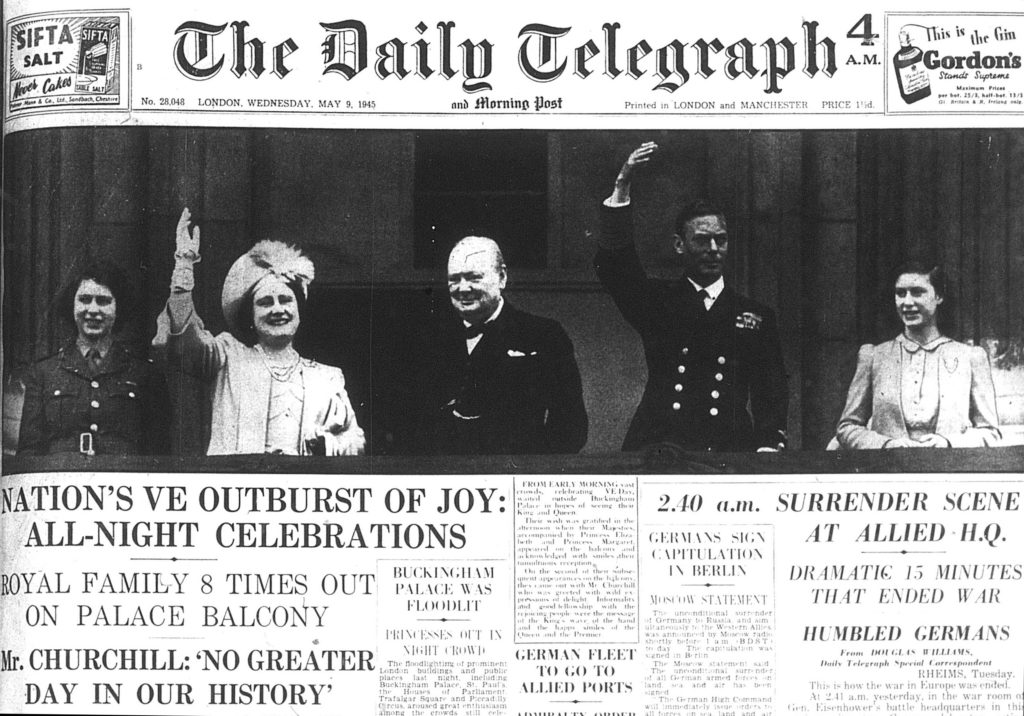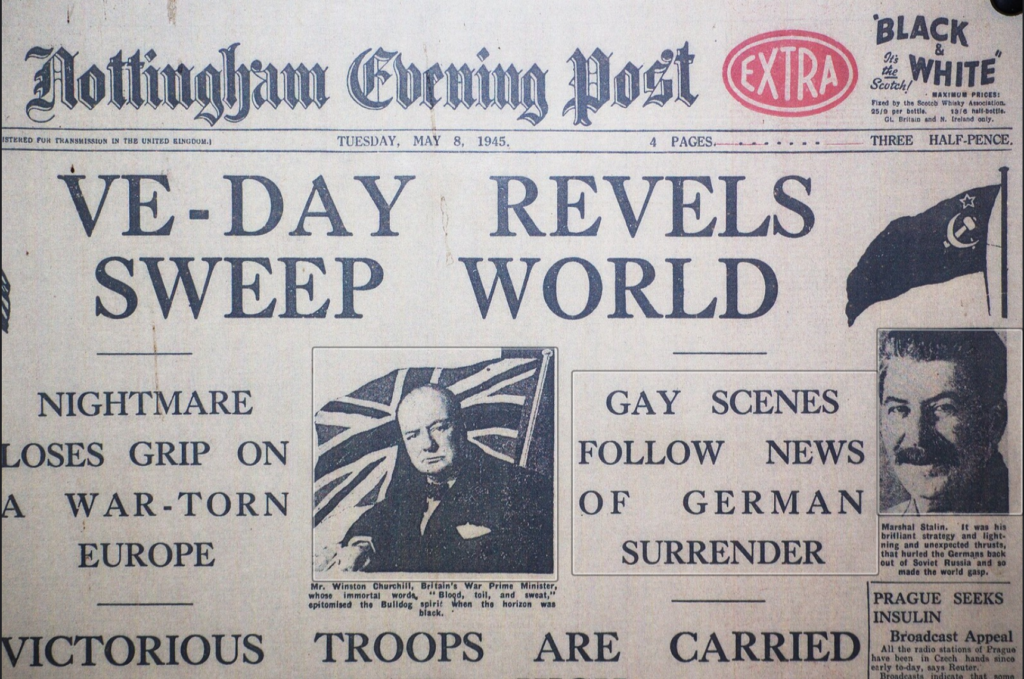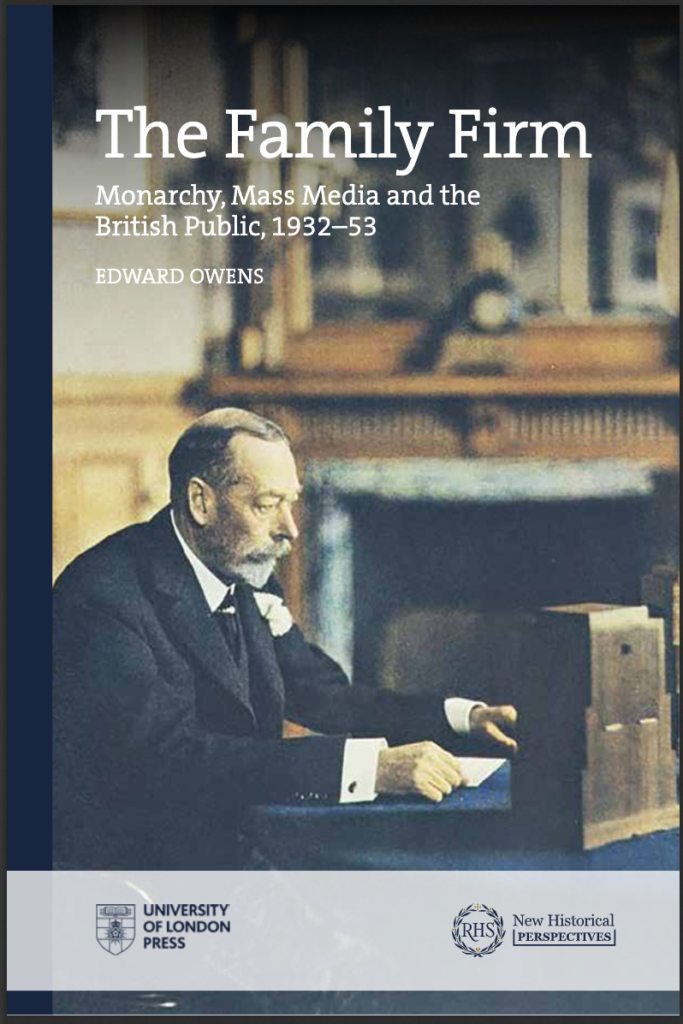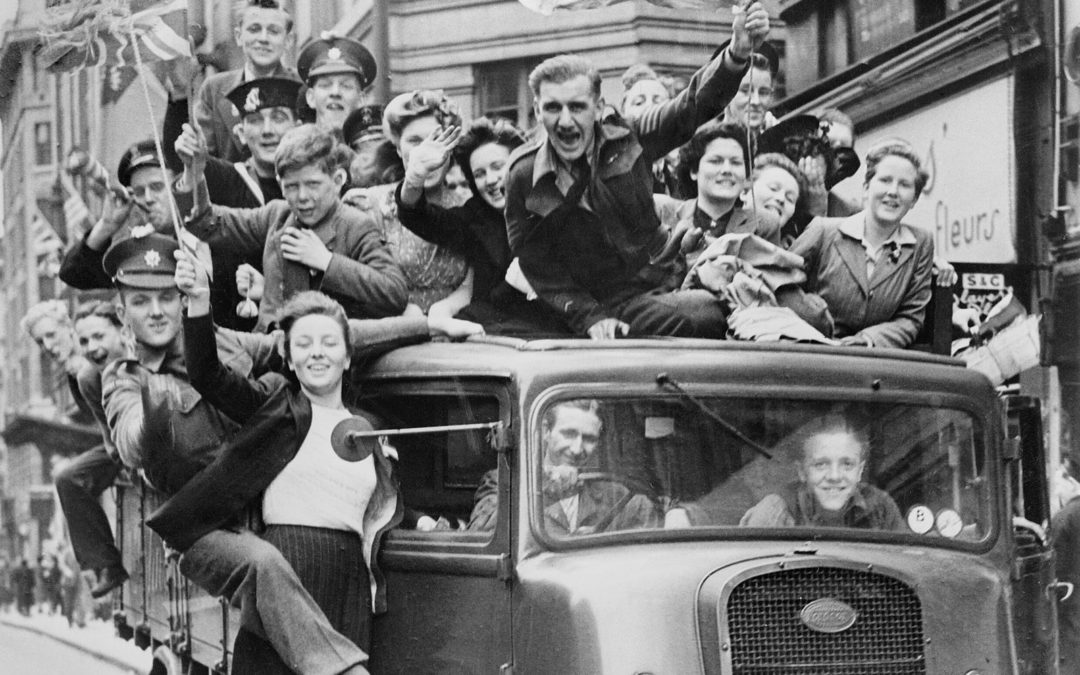By Ed Owens
On the 75th anniversary of VE Day, Ed Owens — author of The Family Firm. Monarchy, Mass Media and the British Public, 1932-53 — reflects on the royal family’s careful cultivation of a media image in wartime, culminating with the events of 8 May 1945.
Given the circumstances, it seems a little mean-spirited to myth bust on what should have been a day of national commemoration and jubilation. The arrival of Covid-19 has seen the 75th anniversary of VE Day take on a much more subdued form. And, while sections of the British media have done their best to cajole the public into acts of tribute and celebration, one can’t help but feel that the current mood does not lend itself to outpourings of positive emotion in memory of the Second World War.
One of the centrepiece moments that’s still going ahead is the queen’s broadcast this evening. While Elizabeth II is certain to offer welcome words of comfort and reassurance, it is likely these will be interwoven with more mythical sentiments about the indomitable spirit of the British in times of crisis.
Every historian of the Second World War knows that the ‘Blitz spirit’ was a convenient invention of the time used to inspire unity and fortitude amid extremely difficult conditions. And yet, unhelpfully, myths like this one continue to be spun by those in positions of power. The problem is that fantasy has been substituted for historical reality, which has in turn led to distortion and, at times, delusion in our understanding of the nation’s recent past.
We should not be entirely surprised that myths dominate the historical agenda, particularly where the monarchy is involved. Buckingham Palace spent the whole of the Second World War trying to draw positive attention to George VI and the royal family at a time when most people had much more pressing concerns affecting their everyday lives.

When invited by the British media to think about VE Day on 8 May 1945, our attention is invariably directed back to the London-based celebrations and a royal balcony appearance where the premier, Winston Churchill, stood shoulder-to-shoulder with the king in front of massed crowds in a demonstration of national unity around the focal point of the head of state and his first minister.
This mythic interaction disguised a more complex reality. Throughout the war, the king had fretted about how Churchill outshone him as the nation’s leader – that he had ‘stolen all the thunder’, to use the term invoked at the time. This dispute came to a head in the lead up to the D-Day landings in June 1944, when the two men fell out because both wanted to watch the operation unfold from a battlecruiser anchored off the French coast.
In the event, common sense prevailed and premier and monarch agreed that neither of them should be in attendance given the risks involved. However, both men’s egos were sorely bruised by their angry exchange.

This interaction pointed to a deeper insecurity on the part of the king which stemmed from the fact that he was a poor public speaker and lacked the kind of charisma possessed by his father and brother when they had been on the throne. Far from the triumphant (if faltering) monologue delivered by actor Colin Firth in the mythic The King’s Speech, George VI’s first broadcast of the war evoked public feelings of sympathy for the king along with concerns that he was too weak to lead the nation in its time of crisis.
Indeed, anxieties about George VI’s lacklustre performance at the microphone meant that other members of his family were forced to adopt more conspicuous public roles in order to ensure that the monarchy remained as relevant as possible. This was why both his consort, Queen Elizabeth, and their eldest daughter, Princess Elizabeth, took to the airwaves to offer words of encouragement and to repeatedly stress that the nation was united in hardship.
As part of the palace’s PR message, the royals – often disingenuously – emphasized that they shared in the burdens of war. The message of ‘equality of sacrifice’ was designed to offset public criticism of royal privilege, which emerged in the first years of the war. For example, the media coverage of the bombing of Buckingham Palace in September 1940 was expertly staged to make the point that the royals and their people were ‘in the front line together’.
It was the royal response to the Blitz that probably did more to stem the flow of public criticism than any other episode during the war. The royal family struggled to carve out a new role for themselves in the first year of the conflict, and the tours of bombed-out urban areas at last provided them with an opportunity to actually do something. The interactions with the public that followed were carefully orchestrated for select groups of journalists and cameramen so that the royals could express concern and care for those people blitzed out of their homes for all the world to see.
The PR emphasis on intimacy, accessibility, and equality of sacrifice would continue to shape the royal media strategy through to the end of the war. It was in this vein that the present monarch was photographed in uniform after she joined the ATS in February 1945 to show the public that she was playing her part in the fight against fascism.
And, yet, there remained an undercurrent of popular criticism of royalty among sections of the British public who questioned the sincerity and reality of the ‘we’re all in it together’ line, with some opining that they’d like to see the nation’s constitutional monarchy replaced with a presidential system, deeming it more meritocratic.
While myths make for more comfortable reading than historical reality, they can cloud our understanding of the past meaning we take for granted the popularity of institutions like the monarchy. The royals worked hard to maintain a positive presence in British society during the war and, notably, the challenges they faced in maintaining their relevance actually led to a professionalization of the royal public relations’ strategy.
It is with these facts in mind, that we are better placed to make sense of the queen’s broadcast this evening, which comes at a time when the crown must once again recalibrate its role in order to adapt to extremely difficult circumstances beyond its control.


Dr Edward Owens is the author of The Family Firm: Monarchy, Mass Media and the British Public, 1932-1953, published in October 2019.
The Family Firm is one of the first titles in the New Historical Perspectives series — an Open Access publishing programme for Early Career Researchers, from the Royal Historical Society, Institute of Historical Research and University of London Press.
Ed’s book is freely available in full or chapter-by-chapter via the University Press’s OA publishing platform, as well as for purchase in hard and paper back print and Kindle editions.

